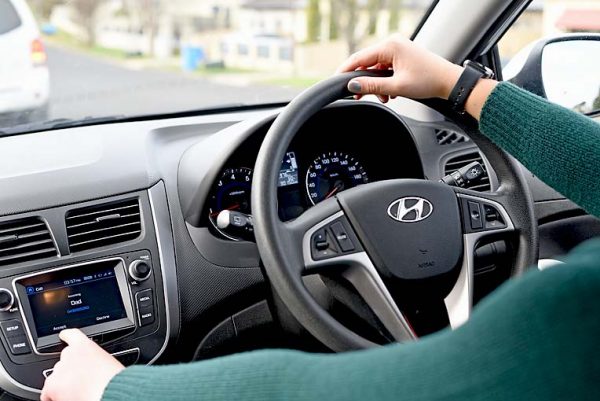

A MAJOR overhaul to driver distraction laws are expected in the coming months to keep road rules moving with the times of the ever-evolving smartphone era.
In conjunction with key stakeholders, the National Transport Commission (NTC) are exploring changes, which would see laws relating to driver distraction loosened to allow more “voice control” and “one touch” actions behind the wheel.
NTC chief executive officer Gillian Miles said that new technology-related distractions, outdated rules and a general lack of understanding from road users present significant challenges.
“Drivers engage in non-driving activities every 96 seconds while behind the wheel,” Mr Miles said.
“Distractions take our concentration off the road which means we may not have time to react to hazards.
“We are proposing four options for consideration – the views of a broad range of stakeholders are crucial to guide any policy reform to deal with driver distraction.”
The changes are expected to provide drivers with more clarity around what functions are permitted while exercising control of a motor vehicle.
In a submission to the NTC, the RAA threw their support behind the changes tabled in the review.
RAA spokesperson Charles Mountain said the aim is to try and make the legislation “less prescriptive”.
“We want the rules to be in line with new technology as it becomes available and the operations they offer,” he said.
“The current national road rules are from 1999, so they have not been changed since the rise of smartphone technology.”
While drivers would remain unable to use hand-held devices, the laws would enable increased functions on phones mounted in a dock or devices, which have voice-control technology.
“We think people are currently struggling to understand what is okay and what isn’t,” Mr Mountain said.
“For example there is no real clarity around what you can and can’t do on a smartwatch, so we want the road rules to clearly reflect what is permitted.”
He cited a recent example – which was well-documented in mainstream media – involving payment for fast food using a smartphone, which by the letter of the law is illegal.
“Technically to do that legally, you have to stop the car, switch it off and then pay for it,” he said.
“This is out of sync with the current age of technology, so things like that need to be changed.”
The legislation is also expected to align other distractions – that do not relate to technology – as an offence within the legislation.
A proposed change to the law would be illegal for drivers to look away from the road for more than two seconds.
“Everything you do in a vehicle that is not in relation to the road constitutes a distraction,” Mr Mountain said.
“Disruptive passengers or looking down to grab a mint out of the centre console can be just as dangerous as a mobile phone.”
Mr Mountain said the Australian Automobile Association have endorsed the key points of the discussion.
“You can expect to see the results of the discussion in a series of revised rules in the coming months,” Mr Mountain said.
“It will then be our role as an association to promote the new legislation, so that everyone is aware and clear on what they can and can’t do.”
While the proposed changes will see the laws “loosened” to a degree, Mr Mountain said the drivers are expected to remain focused on the road.
“There is an expectation that where and when they choose to use these function is appropriate,” he said.
“For example people shouldn’t be changing the music in their vehicle while undertaking a right hand turn.”







